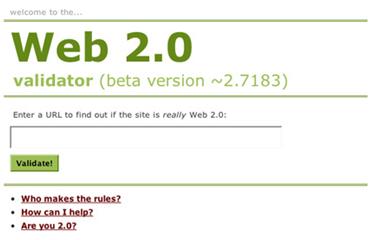Three Trends Influencing Enterprise 2.0

Trend #1: Shift to Cloud Computing
In “cloud computing,” documents and business information are managed online. Google is rapidly building an amazing platform for rolling out on-demand applications on a worldwide scale. Very soon, Google Apps will be a good-enough solution for millions of small business to solve most document management and collaboration problems. Have an idea where all these multi-tenant applications and zetabytes of data will be hosted? Google will spend $500M $3B this year to build the largest data center in the world.
Services like Amazon EC2 (covered here and here) offer pay-as-you-go fully managed server time. On-demand computing is going to completely change enterprise IT architecture. When it only costs $70 a month for a dedicated virtual server with fantastic connectivity 24/7, and you can turn them on and off as needed, why would you want to mess with hardware on-premises?
Trend #2: Growth of Web 2.0 Content and Infrastructure
Since 2005, many successful venture capitalists have been trying to find yet another promising Web 2.0 startup to add to their portfolios. Pundits speculate that during the last two years close to a billion dollars were invested into Web 2.0. During the next five to seven years all this money will pull off a lot of infrastructure with an enormous amount of content and data on it.
But in order for a Web 2.0 company to secure longevity, aggregating terabytes of user-generated content and having lots of servers to serve traffic to gazillions of registered users is not enough. You’ve got to create an ecosystem. How will these newly minted Web 2.0 companies create ecosystems? Ecosystems will come through APIs and data mashups with other websites. ProgrammableWeb maintains the best up-to-date API directory. Look at how fast APIs are being added to their database. In a very short period of time, the key advances of Web 2.0 (namely collaboration and new ways of sharing information) will become an attractive target to benefit enterprises.
Trend #3: Mashups
2007 has been named by BusinessWeek as “the year of the widget.” Widgets are small embeddable components that can seamlessly integrate on third party sites and can deliver content from beyond the realm of the site. To help users create widgets, a growing number of companies out there are developing mashup building tools:
 I learned about Dapper at the Mashup Camp unconference at MIT on January 17, 2007 where I met Eran Shir and Jon Aizen, the company founders. Dapper is an impressive new online mashup tool that takes the concept to the extreme, making it possible to convert and reuse just about any source of information on the web, including that in plain old HTML. This promising startup has recently closed a round of financing with Accel Partners.
I learned about Dapper at the Mashup Camp unconference at MIT on January 17, 2007 where I met Eran Shir and Jon Aizen, the company founders. Dapper is an impressive new online mashup tool that takes the concept to the extreme, making it possible to convert and reuse just about any source of information on the web, including that in plain old HTML. This promising startup has recently closed a round of financing with Accel Partners. DataMashups.com is a new highly web-centric mashup tool complete with a WYSIWYG “edit” mode.
DataMashups.com is a new highly web-centric mashup tool complete with a WYSIWYG “edit” mode. Grazr is an application development system for feeds and their GrazrScript is a programming language for feeds. John Musser of ProgrammableWeb posted a recent news update on Grazr closing $1.5 million Series A round of financing.
Grazr is an application development system for feeds and their GrazrScript is a programming language for feeds. John Musser of ProgrammableWeb posted a recent news update on Grazr closing $1.5 million Series A round of financing. JackBe’s JackBuilder product is a browser-based mashup tool to create mashups called “Rich Enterprise Applications” or REAs. JackBuilder is an entirely Ajax-based IDE that allows widgets, components, and services to be integrated together into enterprise mashups.
JackBe’s JackBuilder product is a browser-based mashup tool to create mashups called “Rich Enterprise Applications” or REAs. JackBuilder is an entirely Ajax-based IDE that allows widgets, components, and services to be integrated together into enterprise mashups.
All of these tools allow for building a quick and dirty SOA, and are aimed at technology enthusiasts. Focused on web screen scraping and RSS, today’s mashup design tools could hardly be applied across the enterprise sector. But that will change. Mashup technologies can and will disrupt enterprise applications. During the next three years, mashups will open up a new enterprise application market, providing business users and IT departments with a quick and inexpensive approach to develop and implement applications. And during the decade following 2010, maturing mashup building technologies will shrink the enterprise application market.
In my next post, I will express my opinion on whether mashups are capable of pushing Web 2.0 into the enterprise space.










